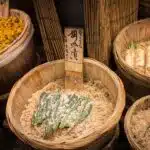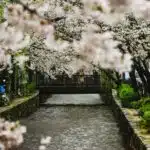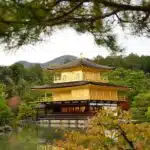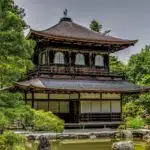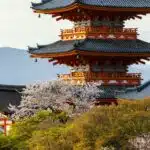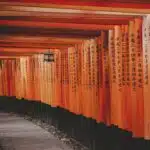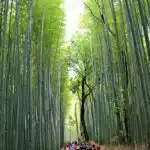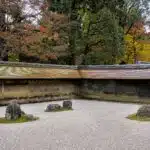Nijo Castle (Nijo-jo), located in Kyoto, is a UNESCO World Heritage Site and one of Japan’s most historically significant castles. Built in 1603 by Tokugawa Ieyasu, the founder of the Tokugawa shogunate, Nijo Castle was designed as the Kyoto residence of the shoguns. The castle is renowned for its stunning architecture, beautifully preserved interiors, and expansive gardens, offering visitors a glimpse into Japan’s feudal past.
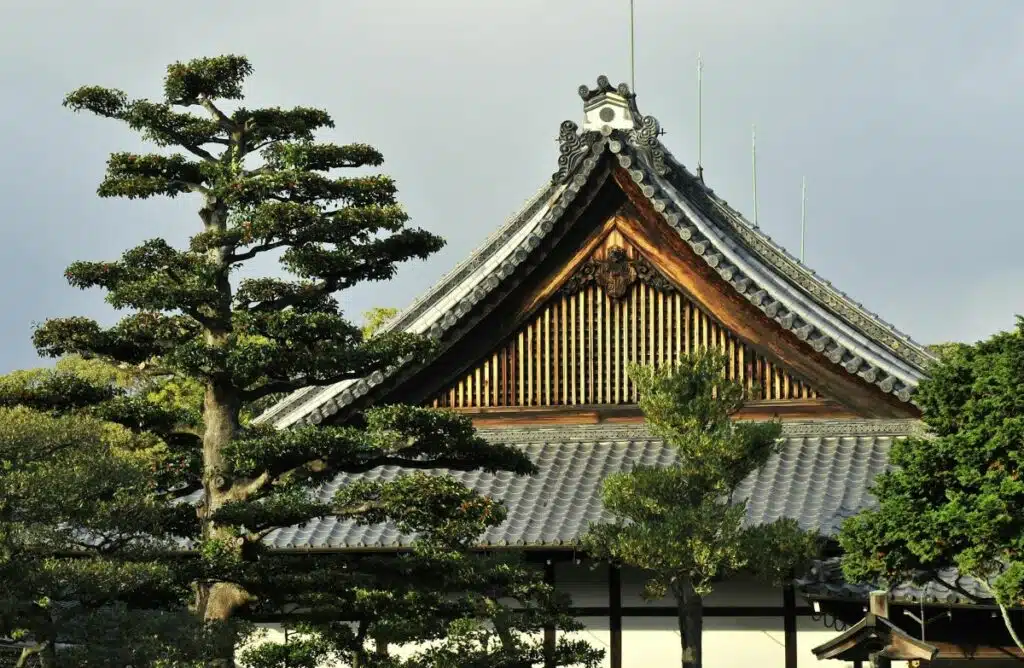
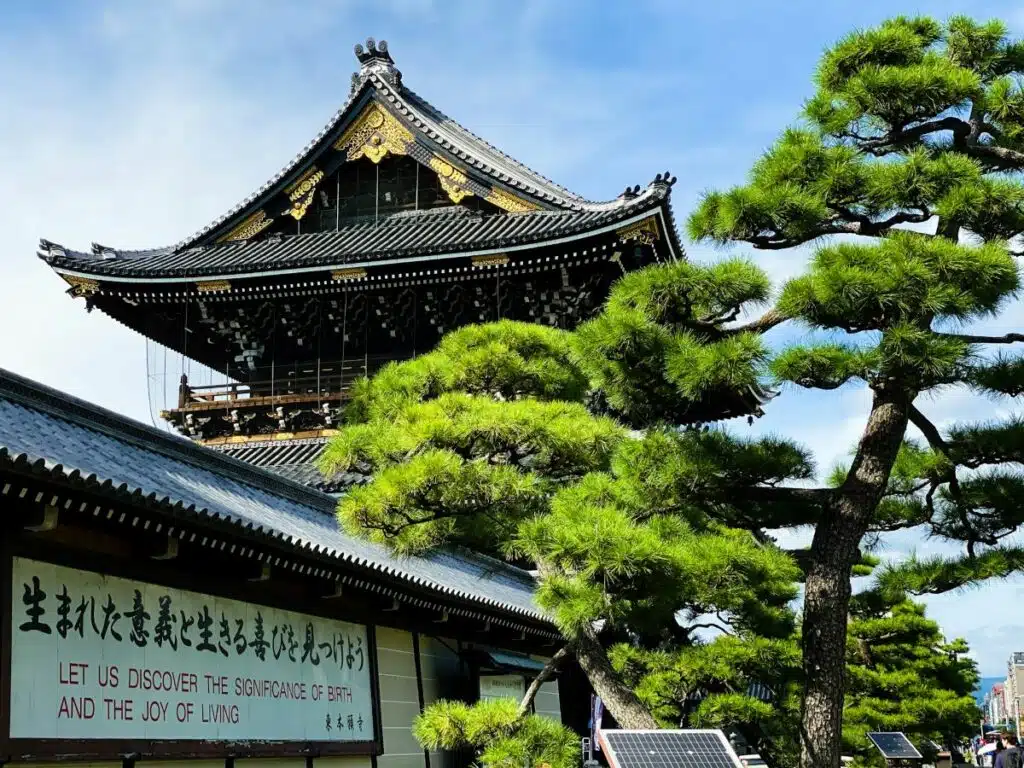
What to See at Nijo Castle
- Ninomaru Palace: The main attraction within Nijo Castle is the Ninomaru Palace, a grand wooden structure composed of multiple interconnected buildings. Inside, visitors can marvel at the elaborate interiors adorned with intricate carvings, gold leaf, and paintings by the Kano School. The palace features “nightingale floors” that chirp when walked upon—a clever security feature designed to alert guards of any intruders.
- Karamon Gate: This ornately decorated gate serves as the entrance to the inner grounds of the castle. Its elegant design features intricate carvings and gold leaf, symbolizing the power and prestige of the Tokugawa shogunate.
- Ninomaru Garden: Surrounding the Ninomaru Palace is a beautiful traditional Japanese landscape garden, featuring a large central pond, carefully placed rocks, and manicured pine trees. The garden offers serene views and is a perfect spot for reflection.
- Honmaru Palace and Gardens: Although the Honmaru Palace is usually closed to the public, visitors can explore the Honmaru Gardens, which provide panoramic views of Kyoto from atop the castle’s main keep ruins. The gardens are particularly beautiful during cherry blossom season and autumn.
- Castle Walls and Moats: Nijo Castle is encircled by massive stone walls and moats, emphasizing its defensive nature. Visitors can walk along parts of the walls for a better view of the grounds and surrounding Kyoto.
- Seasonal Events: Nijo Castle hosts several events throughout the year, including special light-up events during cherry blossom season and autumn, when the grounds are illuminated to enhance the natural beauty of the gardens.
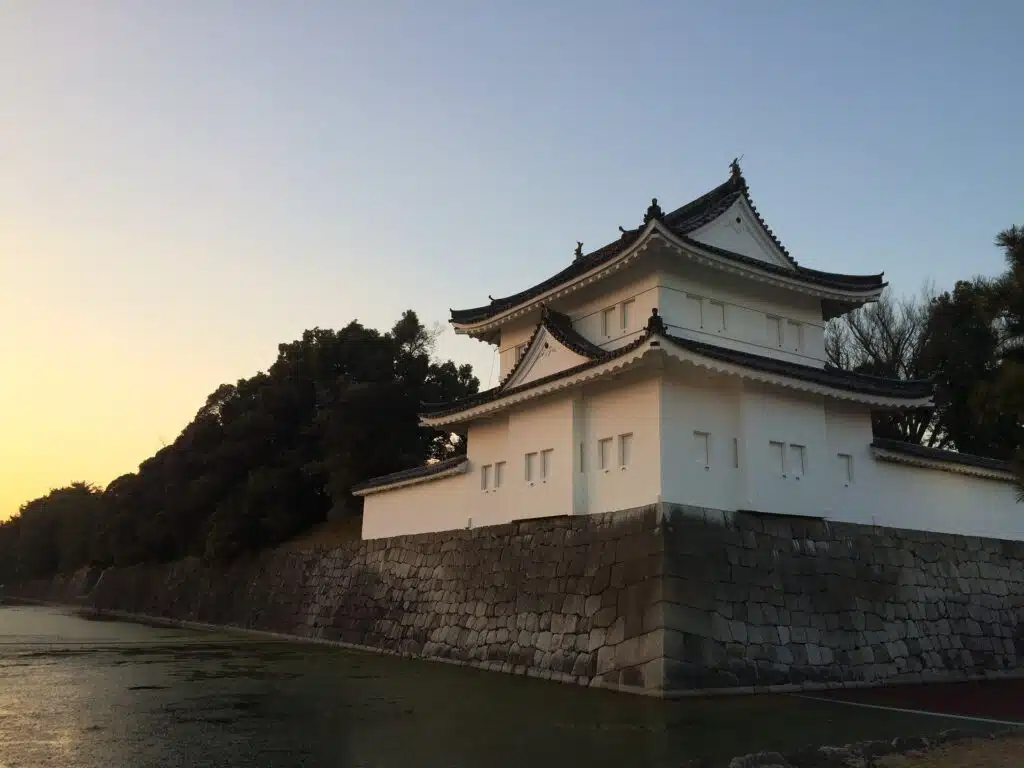
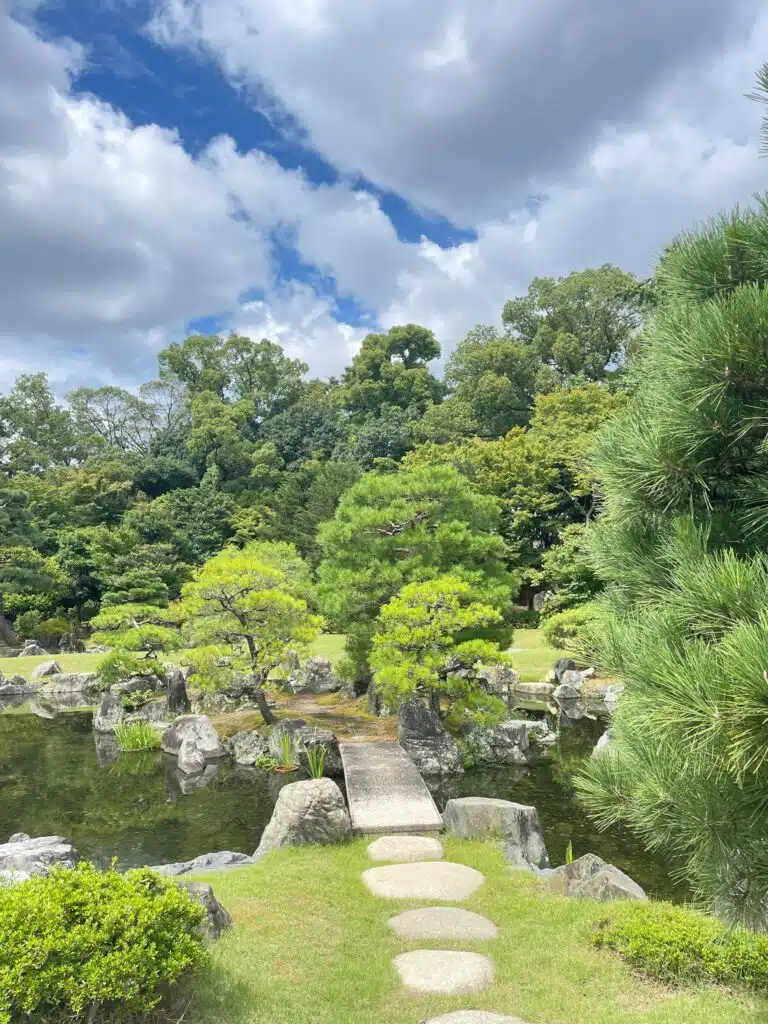
Tips for Visiting Nijo Castle
- Best Time to Visit: Nijo Castle is beautiful year-round, but spring (cherry blossom season) and autumn (fall foliage) are particularly stunning. If you prefer fewer crowds, visiting on a weekday morning will offer a more peaceful experience.
- Wear Comfortable Shoes: The castle complex is quite large, so comfortable walking shoes are recommended. The pathways are generally well-maintained, but there is some uneven ground, especially around the gardens.
- Photography: While photography is allowed outside, it is prohibited inside the Ninomaru Palace to protect the delicate interiors. However, the gardens and exterior structures offer plenty of beautiful photo opportunities.
- Nightingale Floors: Don’t miss the chance to experience the famous “nightingale floors” in the Ninomaru Palace. These floors are a unique feature designed to squeak like birds when stepped on, adding an intriguing aspect to your visit.
- Combine with Nearby Attractions: Nijo Castle is located near other popular Kyoto sites, such as Kyoto Imperial Palace and Nishiki Market. Planning a half-day itinerary that includes Nijo Castle and nearby attractions is a great way to explore the area.
- Guided Tours: Consider joining a guided tour to fully appreciate the history and significance of Nijo Castle. Audio guides and pamphlets are also available to provide context for the castle’s role in Japan’s history.
- Plan for Time: Allocate at least 1.5 to 2 hours to explore the castle thoroughly, including the palace interiors, gardens, and outer grounds. There’s a lot to take in, and rushing through can diminish the experience.
- Accessibility: While the main grounds and gardens are mostly accessible to those with mobility challenges, the interior of the Ninomaru Palace has steps, and some areas may be difficult to navigate for those with limited mobility.
- Cash for Admission: Make sure to bring cash for the entrance fee, as not all ticket counters may accept credit cards.
Shogun Era
A Shogun was a military dictator in Japan who held ultimate power, often surpassing the emperor’s authority. From the late 12th century to the mid-19th century, Japan was largely ruled by various shogunates (military governments), with the emperor serving as a symbolic figurehead. The most famous shogunate was the Tokugawa Shogunate, which lasted from 1603 to 1867. Shoguns controlled the military, political, and economic affairs of Japan, maintaining order through a feudal system of samurai warriors and vassal lords known as daimyos.
Getting There
Nijo Castle is easily accessible via public transportation. It’s just a short walk from Nijo-jo-mae Station on the Tozai Subway Line, or a 15-minute bus ride from Kyoto Station.
Why Visit Nijo Castle?
Nijo Castle is a masterpiece of Japanese feudal architecture and design. Its historical significance, beautiful gardens, and well-preserved interiors make it a must-see destination in Kyoto for those interested in Japan’s history, culture, and art.


